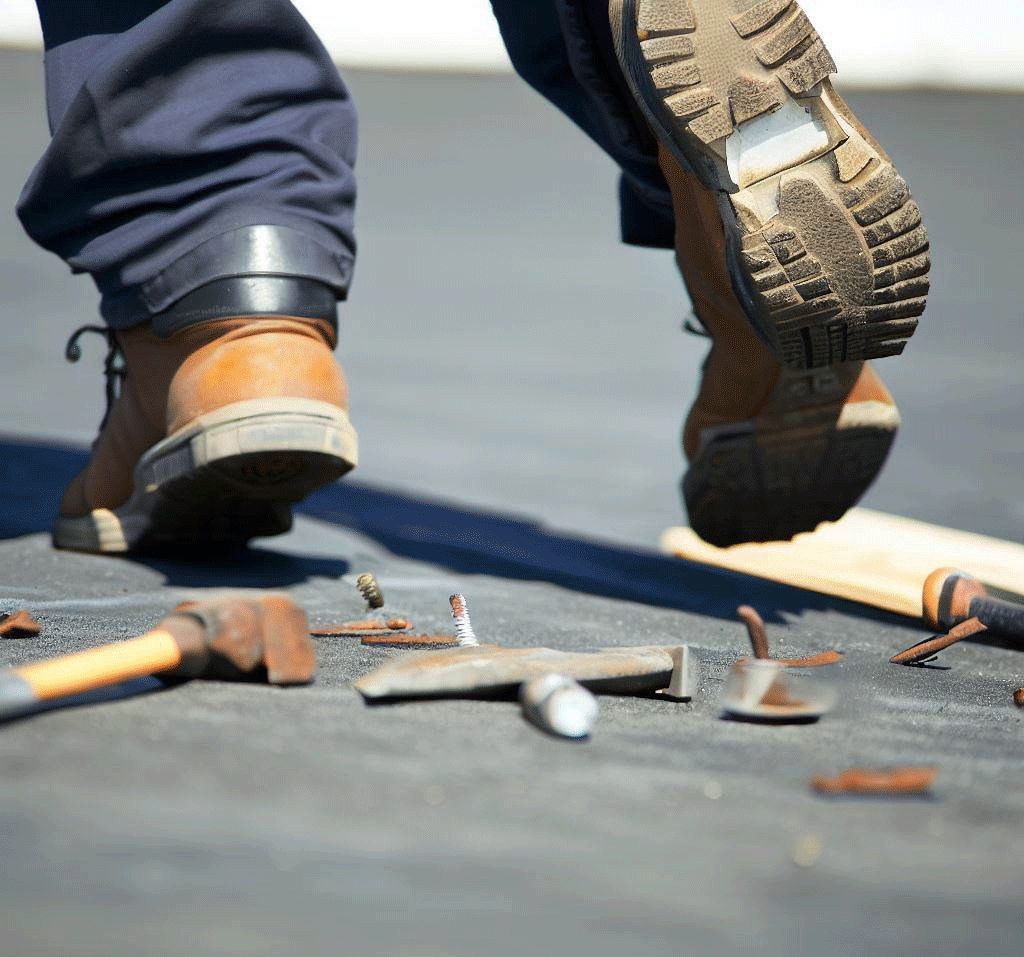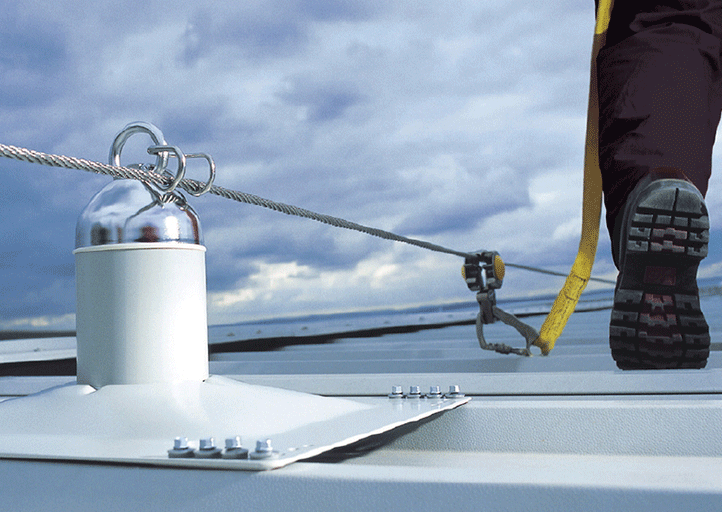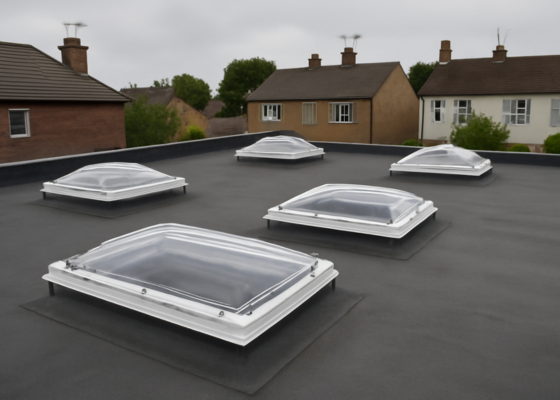You’ve installed edge protection on your roof, but that doesn’t mean you’ve fulfilled your duty to protect people working at your premises. What about protecting them from slips and trips? HVAC systems, solar panels and communication equipment are often housed on rooftops. These cause congestion and create obstacles and trip hazards for workers. So what can you do to protect people working on your roofs and prevent costly slips and trips?
Slips and trips: Safe access equipment
People will need regular access to your roof throughout the year. This could be for general maintenance, equipment inspection or general roof repairs. Whatever the reason, you need to ensure they can go about safely, especially as they may not be paying close attention to where they’re walking. They could be thinking about the task at hand or carrying something. And before you know it, they’ve tripped over a satellite dish cable or HVAC ductwork.
Safety underfoot: Uneven surfaces, slopes, and varying pitches can all cause problems for workers crossing a roof.
Solution: Rooftop walkways are ideal for creating a safe, level, non-slip route across a roof or to plant & equipment requiring regular inspection and maintenance. As well as providing workers with a demarcated path, walkways have the added benefit of protecting the roof from foot traffic wear and tear. Additional protection, such as lifelines and guardrails alongside the walkway, will provide a more comprehensive safety solution.

Navigating over obstacles: It’s not always possible to have a clear, unobstructed route across a roof, particularly if it is crowded. Sometimes workers may need to navigate over obstacles such as piping, ductwork, cable trays or other equipment. All of these pose a trip hazard.
Solution: Bespoke step over units and access platforms can be designed for each obstacle, trip hazard or gap. They can even provide safe access between different levels. Step over units and access platforms provide workers with safe passage over obstacles and overcome having to navigate around the barrier into what could be an even more dangerous area.
Slips and trips: General safety steps
Walkways, platforms and steps overs are not the only solutions. You must also take a proactive approach and implement standard preventative measures. Other areas to address include:
Uneven or damaged surfaces: Damaged or worn-out sections on a roof can increase the risk of slips and trips.
Prevention: Regularly inspect and maintain your rooftops, fixing any damaged or uneven areas. Use signage and barriers to identify worn or damaged areas to warn workers of potential hazards.

Poor Housekeeping: Cluttered rooftops with debris, tools, or equipment can cause an obstruction and contribute to slips and trips.
Prevention: Maintain a clean and organised rooftop. Remove debris, tools and equipment properly, and ensure walkways are clear. Regular housekeeping practices should be implemented, including scheduled clean-ups and inspections.
Your duty to protect workers from slips and trips on your Rooftop
Working at height is always dangerous, so it’s best to try and avoid it. But that’s not always possible. Unfortunately, workers will always need to access your roof for maintenance, inspection and repair. If you are a building owner or manager responsible for site safety, you must ensure work at height can be carried out safely on your property.
This doesn’t just mean providing a safe route onto the roof or installing an edge protection system to prevent a fall from height. You also need to consider protecting workers from hazards as they walk around your roof by putting the correct solutions in place.
If you need help identifying slip and trip hazards on your roof or want to discuss rooftop safety solutions, we’re here to help.


